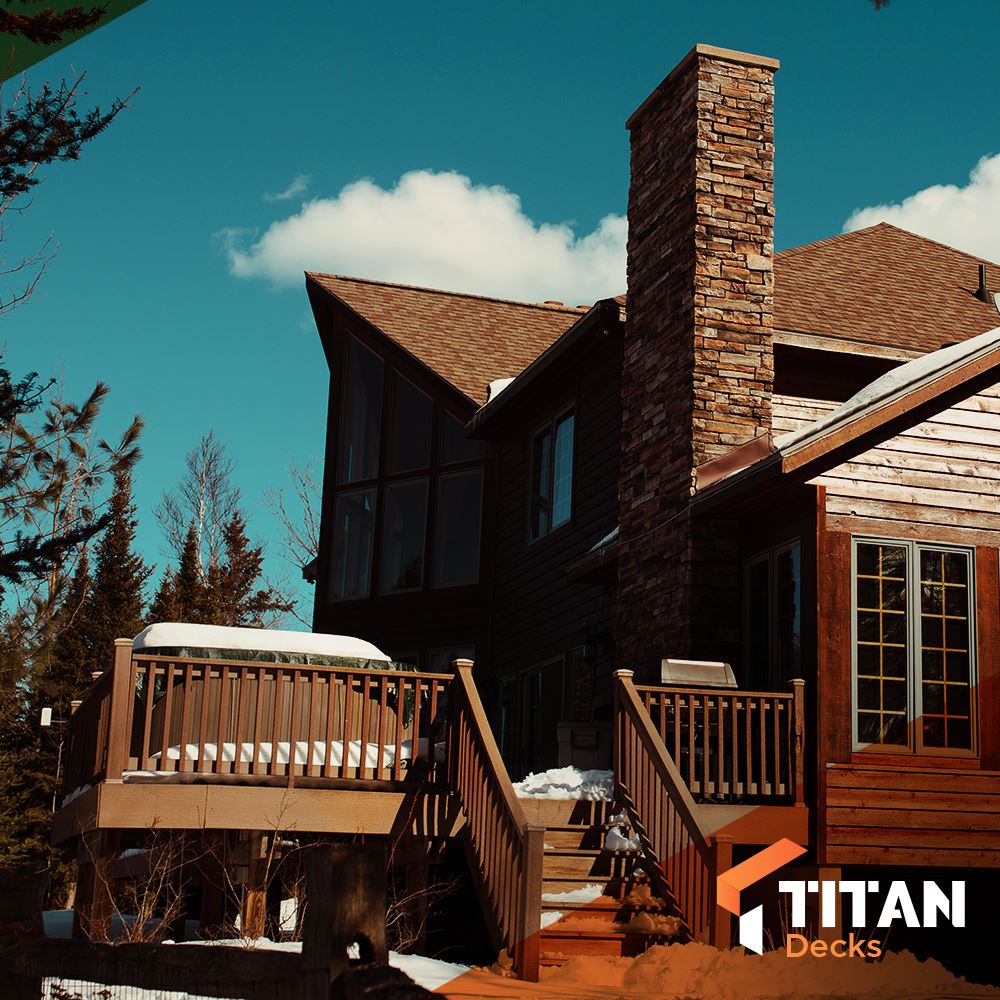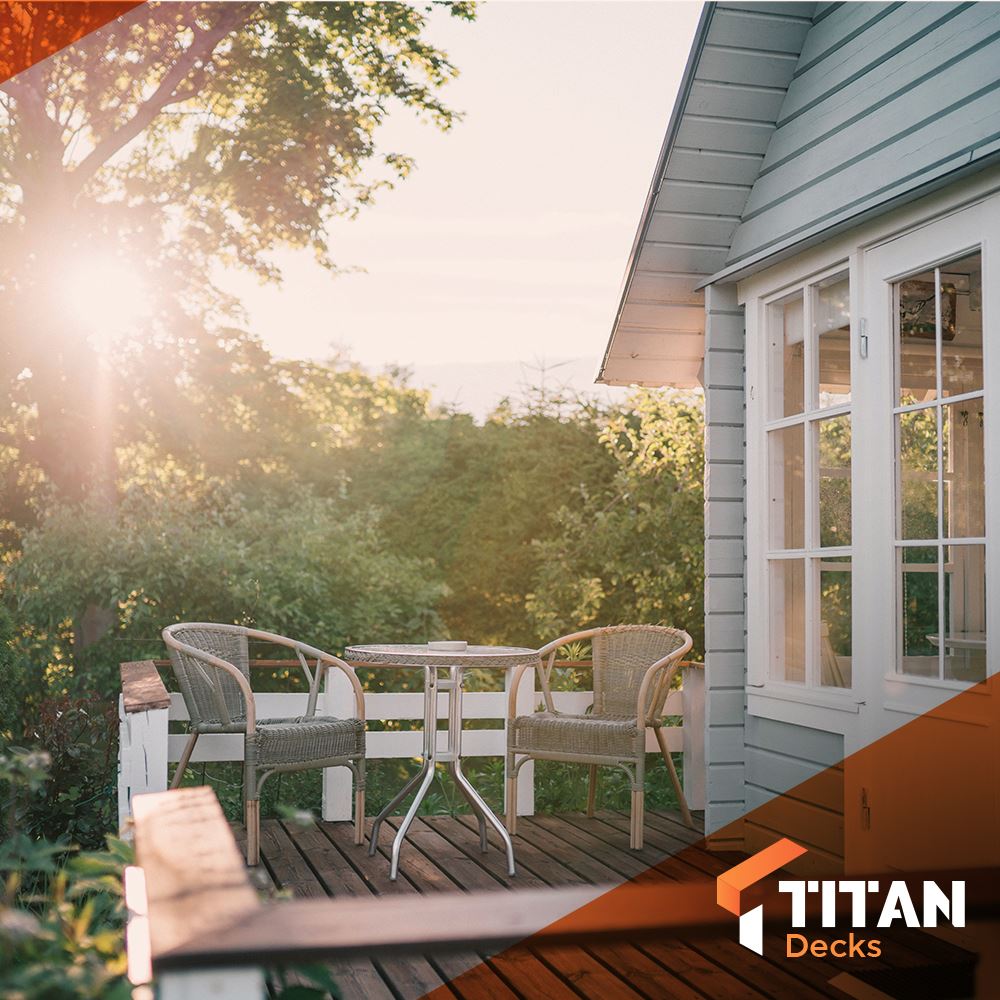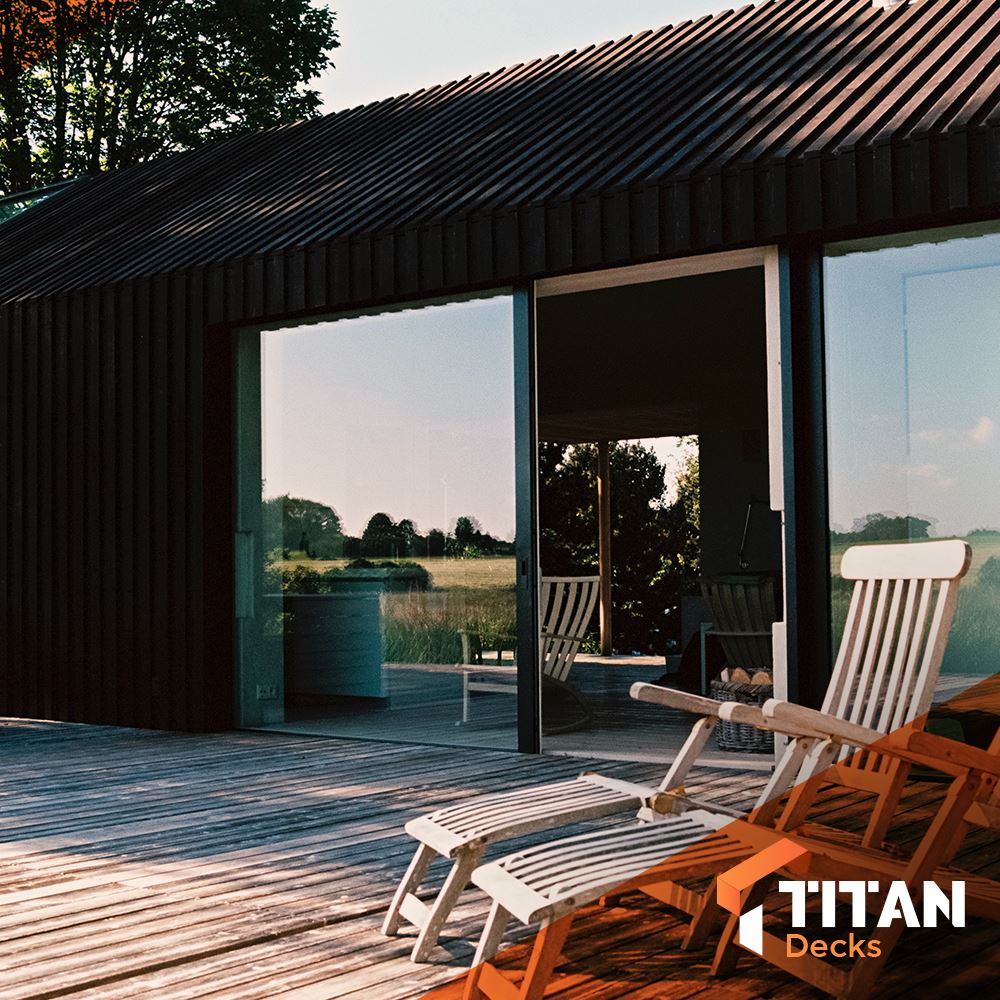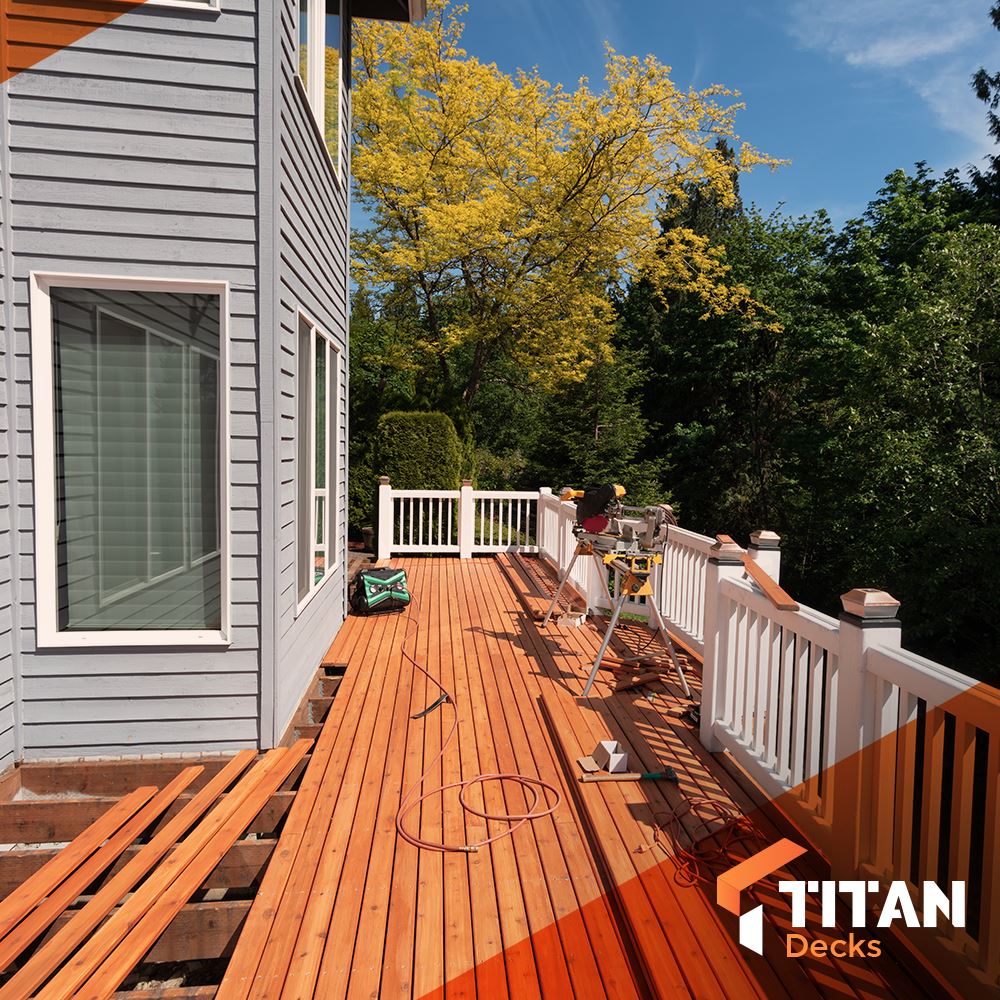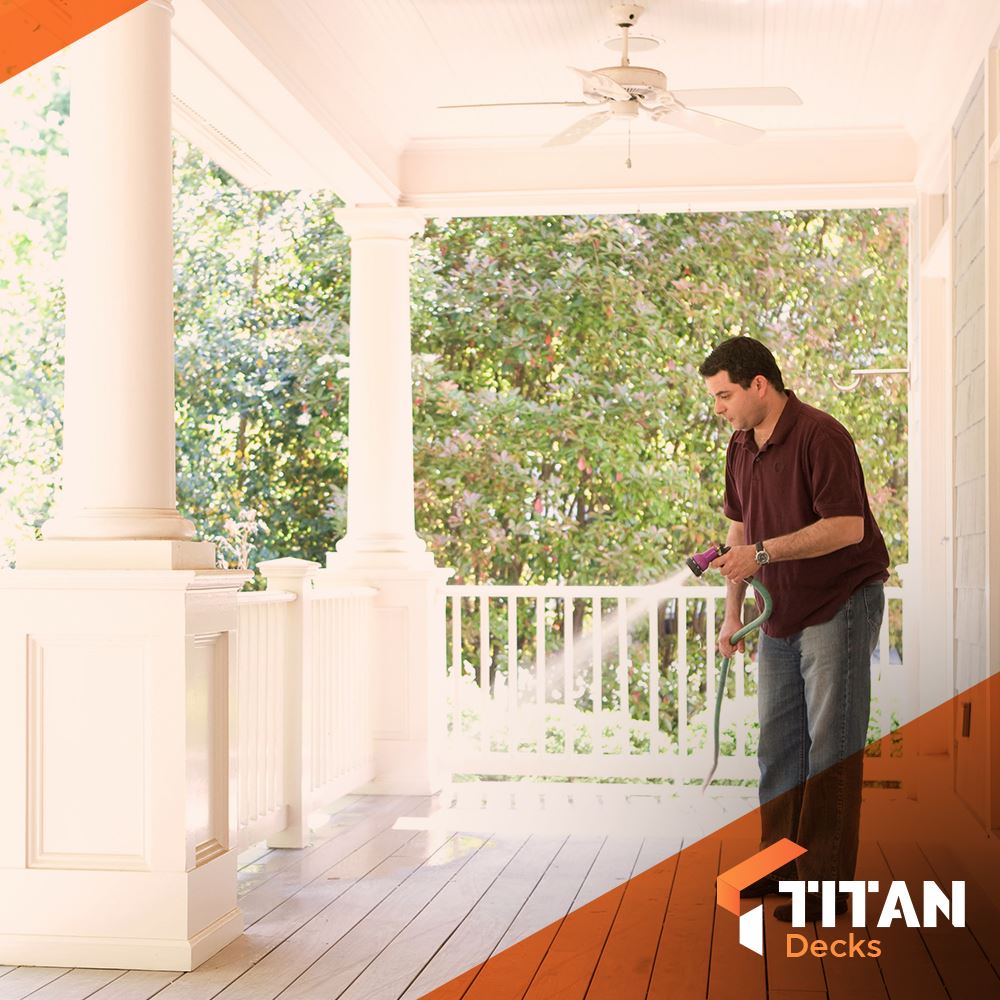Your deck is the center of family life during the summer. You work, rest, and play on your treasured outdoor living space. But then the cold harshness of a Michigan winter sets in, and you watch the snow accumulate on the deck railings. You may long for those warm months, but did you know you could still find ways to enjoy your deck, even during the winter?
Winterizing Your Deck
Whether your deck is made of composite or real wood, it needs to be taken care of so it can continue to take care of you. Regardless of what season you plan to use it, your deck needs to be winterized in order to lengthen its lifespan.
Winter weather wreaks havoc on decks, especially if it is not taken care of properly. Here are a few steps you can take to maintain your deck:
- Apply a protective finish prior to winter weather.
- Remove any noticeable mildew or mold
- Clear off any clutter
- Consider covering with a tarp
- Use a broom (it’s more gentle on the composite) to remove snow and ice accumulation
Using Your Deck During The Winter
Michigan is a winter wonderland. Unless we are having one of our notorious mild winters, or until you have to shovel heavy snow off your driveway. There’s absolutely no reason you can’t enjoy the benefit of your deck, even when the snow and temperatures are falling.
- Add warmth: Firepits, patio heaters, or other outdoor heat sources can transform your deck into a cozy gathering spot. Roast marshmallows, drink hot chocolate, and breathe in the crisp air. With any type of fire, make sure it is raised above the deck surface to protect not only your deck but your home as well.
- Cover it up: Consider adding an awning close to your fire pit or outdoor fireplace. Throw a weather-proof seating arrangement down and you’ve got a great space to enjoy.
- Light it up: Adding colorful holiday lights to your deck will give it a festive feel all winter long. Make sure the lights you use are indoor/outdoor for the best results.
- Take a dip: Installing a hot tub on your deck will bring year-round enjoyment. Especially during the winter. It’s cold outside, but it’s warm in that jacuzzi. Have some thick towels or robes waiting for when you’re ready to get out.
- Remain the grillmaster: Just because it’s cold and snowy doesn’t mean you can’t grill up some kabobs, steaks, fish, or whatever is on the menu. Keep a shovel nearby, just in case you need to forge a little path to that grill.
- Come sled away: Maybe your yard doesn’t have a hill. The stairs, covered in a thick blanket of snow, can create a great makeshift ramp.
Turn Your Deck Into An Ice Rink
Your deck can become THE winter hotspot, guaranteed to bring all the kids to your yard. Just add skates and hot chocolate, and it’s a wrap.
To turn your deck into an ice rink:
- Lay down a large tarp, creating borders so water doesn’t immediately escape when added.
- Secure the tarp using bricks or an equally heavy object to hold it down.
- Fill the tarp with a few inches of water from your garden hose. Doing it all at once will create a smoother surface.
- If the surface seems lumpy, add a little bit of hot water to smooth it out.
- For any cracks, just fill in with snow and smooth it over.
- Allow it to freeze.
- When you aren’t using the ice rink, consider lightly covering it with another piece of tarp.
That’s it.
Super easy to do and will provide hours of fun for the family. If it snows, just use a broom or a light shovel to sweep it clear.
Disclaimer: a weathered deck may not be able to support this adventure. Make sure your deck is in good condition before considering turning your deck into an ice rink because it has the potential to be hazardous.
If enjoying the Michigan winters is something you’d prefer from inside your house, then consider having a deck cover professionally installed.
If you’re in the market for a deck refresh or new build, contact Titan Decks today for a free estimate. Get 15% off your new deck build, now through February 1st.
